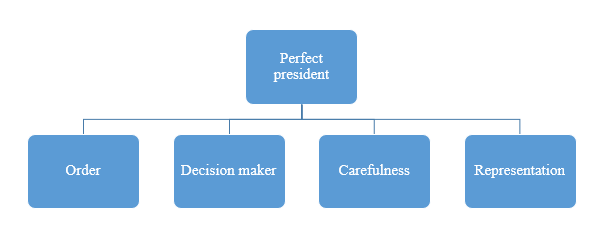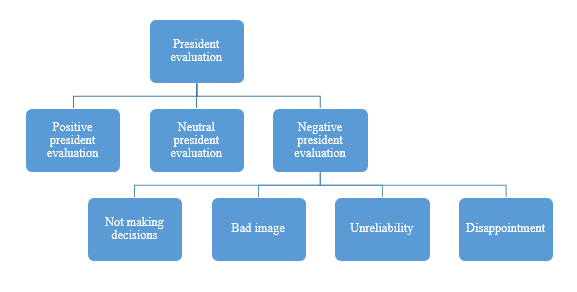By Austėja Šataitė
How do Lithuanian voters imagine a perfect President? Qualitative data shows that for older rural voters the most important value is order – a President must be the one who is strict, whose words are respected – a true leader. An ideal President must take action, be firm and never hesitate.
However, despite strong leadership, a President should also be sensitive. He is expected to care for the ordinary people or, in the words of one informant, be “like Jesus Christ”. Finally, people expect a perfect President to represent the country well – to be good looking, active, and modern.
But how does this image of a perfect President correlate with the view of the current Head of State – Gitanas Nausėda? After more than a year in the office, Nausėda is still among the most popular politicians in Lithuania.
However, some informants find him lacking leadership skills, unable to make decisions and, overall, express disappointment with him. Talking about his ability to represent the country, the opinions diverge. Some informants accuse the President of not having a proper image in international politics, while others express admiration with how the President handles his role.
Overall, Lithuanian voters wish to have a strict President who cares for ordinary people. For some of them Gitanas Nausėda is far from the ideal, but they view his image as his best quality.
See the recorded conference report here [Lithuanian].


About methodology
In summer 2020 IIRPS VU (VU TSPMI) Students’ Scientific Society led by prof. dr. Ainė Ramonaitė carried out a fieldwork in rural areas of Lithuania. The initiative was a part of “Lithuanian National Electoral Study 2020” and its results were presented in the conference “Lithuania after the Seimas elections 2020” on 26 March, 2021. We decided to share some of the students’ papers in this blog.
The fieldwork took place in a small town (appr. 5000 people) and a village (appr. 300 people) on 5-6 August, 2020 (notably – before the second wave of COVID-19). The area differs from Lithuania as a whole in terms of its electoral choices in the Seimas elections in 2020 – conservative Homeland Union and Lithuanian Socialdemocratic Party were way less popular here, while the Farmers and Greens Union (former governement party), Labour Party and Liberal Movement gained significantly more votes than in the rest of the country.
The chosen fieldwork method was semi-structured qualitative interview. During the field research a team of 8 people took 20 interviews, usually, between 30 and 60 minutes in length. The researchers chose variety sampling. There were 9 males and 14 females in the sample (contrary to the researchers’ wishes sometimes 2 people participated simultaneously). Among them there were people with higher, vocational or high-school education, old age pensioners, students, workers and unemployed people. 4 of the informants fall in to the 20-35 age category, 3 to 35-50 category, 8 to 50-65 and 8 were older than 65.
Later, the qualitative interview analysis has been carried out in three rounds. Firstly, the interview transcripts have been coded into different themes (some of which are reflected by the topics of the conference papers). Secondly, each theme has been assigned two researchers who would then inductively code their theme independently from one another. Finally, the codes have been discussed, agreed upon and analyzed by both researchers.
Rich qualitative data gave students a better understanding about the inner logic, feelings and actions of Lithuanian people and they’d like to share it with the political science community.